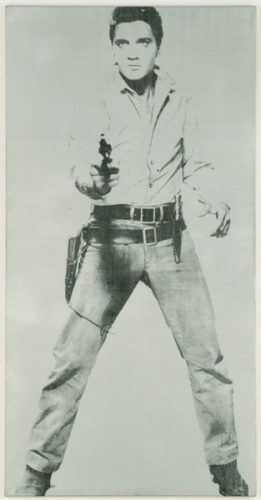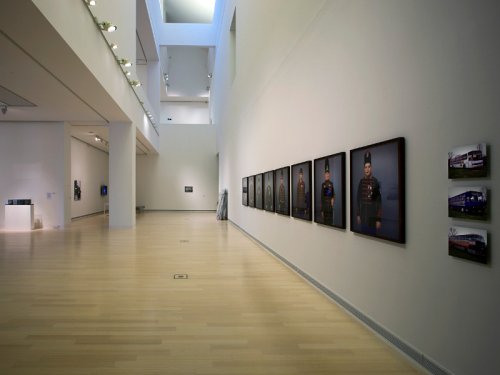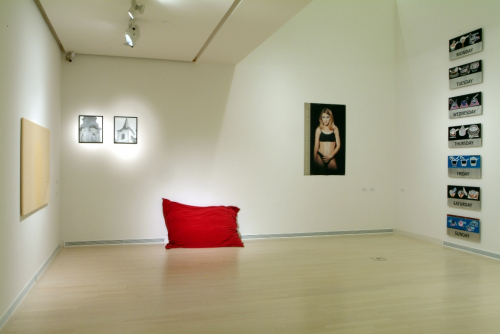Komoróczky is interested in the different expressive forms of popular culture which he considers in the context of the arts. Do we watch and evaluate a video clip differently when it is broadcasted on one of the music channels and when we encounter it in an exhibition space? Is there something like a minimal set of tools defining these clips, or we can’t establish any set of artistic criteria in this genre? Can we talk about a genre, or rather a specific era when the market of music videos opened up with the appearance of MTV? Is there a difference, and if so, what is it, between popular culture and contemporary art? The videos of Tamás Komoróczky raise the doubt whether there can be exact and final answers to these questions.
Komoróczky’s videos often make the impression as if the artist had created his work from films and footages found randomly in different places. His work Tádé is also like that: in it we can see a young man looking into the camera while drinking and soliloquizing in a pub terrace, as if he were addressing himself directly to us, viewers. The text does not seem to differ from the usual drunk talk, and the tone of his voice only emphasizes this. But if we listen carefully to the text we may realize that it is full of puns, allusions and references to the verbal elements of contemporary urban “folk culture”. We become conscious of the fact that we are not listening to an ordinary speaker, but rather a highly creative language user. Another interesting aspect of the film is that in its socio-psychologically precise presentation the viewer can follow step by step the process of the young man’s getting drunk, which in this case also means witnessing an emotional journey. By making the viewer the receiver of the speaker’s message, the film’s narrator manages to get the viewer to identify emotionally with him, or at least to feel as a participant in the presented situation. This, however, applies not only to the situation in the film, but the exhibition situation as well.



